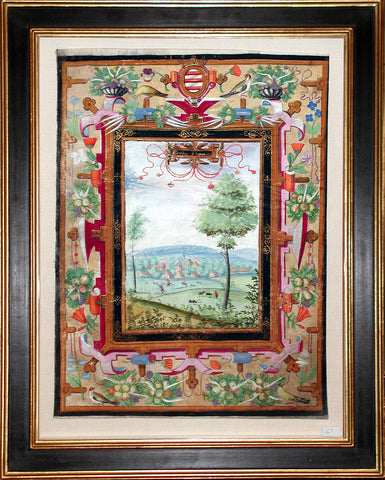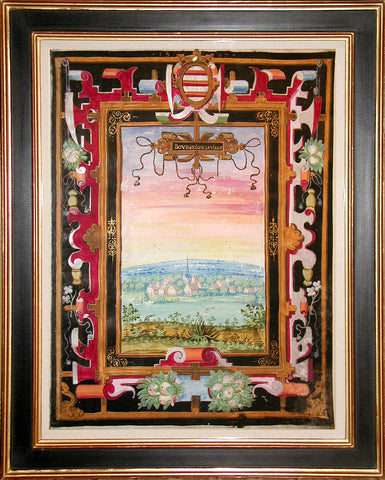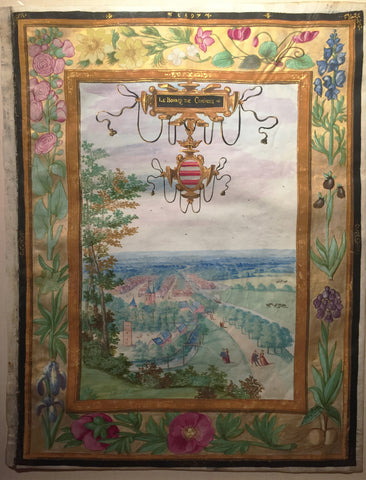
Nicolino Vicompte Calyo (1799-1884), Cincinnati on the Ohio River
Nicolino Vicompte Calyo (1799-1884)
Cincinnati on the Ohio River
Watercolor and gouache on paper
Image size: 5 x 7 5/8 in.
Framed size: 8 1/2 x 10 7/8 in.
Inscribed l.c.: ‘Cincinnati on the Ohio River’
Calyo’s career reflects a restless spirit of enterprise and adventure. Descended from the line of the Viscontes di Calyo of Calabria, the artist was the son of a Neapolitan army officer. Calyo received his formal training in art at the Naples Academy, and his career took shape amidst the political turbulence of early-19th century Italy, Spain, and France. He fled Naples after choosing the loosing side of struggles of 1820-21, and by 1829 was part of an Italian exile community in Malta. This was the keynote of a peripatetic life that saw the artist travel through Europe, to America, within America, perhaps to Europe again, and back to America. Calyo’s forte was close observation of people and places, meticulously rendered in the precise topographical tradition of his fellow countrymen, Canaletto and Francesco Guardi.
In search of artistic opportunity, Calyo left Malta and, by 1834, was on the opposite side of the Atlantic Ocean in Baltimore, Maryland. He rapidly drew attention for his artistically rendered visual images of familiar locales, executed with a degree of polish and skill that was second nature for artists trained in the European academic tradition. It was there that he held his first exhibitions of his large-scale European views. After a year in Baltimore, Calyo, drawn by the sights of the flourishing metropolis, arrived and settled in New York in 1835. Calyo created some of his most recognizable work after moving to New York, such as his dramatic watercolor views of the New York fire (which occurred on December 16-17, 1835), a pair of which were engraved as prints by William Bennett in 1836. He drew inspiration from the bustling city, creating striking renderings of urban workers, vendors, and other street figures in the manner of Jacques Callot; a group of these were published in 1840 as the Cries of New York.
Calyo’s vivid landscape paintings are perhaps his greatest legacy. As an experienced traveler and artist, he made many of his watercolor and gouache sketches on location; some of which became sources for larger scale landscapes on paper. Calyo continued to be active in scenic painting through the 1850s.
We Also Recommend





